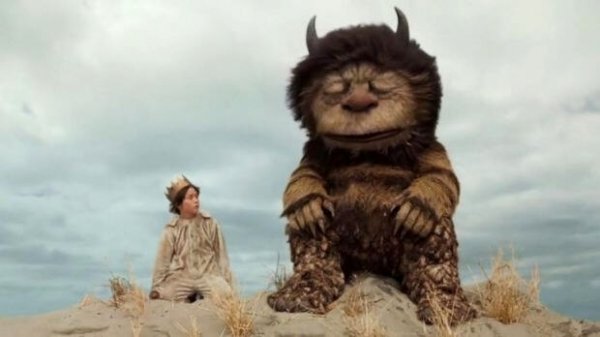The Monsters that Lurk in our Minds


Written and verified by the psychologist Valeria Sabater
As children, they always told us that monsters only existed in stories. Nobody ever told us that they were actually real people and walked around in broad daylight. Like the person who first of all ravishes you, then abuses you and finally annihilates your self-esteem. Like parents who deny love to their children. And also the terrorist who takes away innocent lives, or the politician who starts an unnecessary war.
If there is one thing we all know it’s that words are important. They create labels that are not always entirely true. The term “monster”, for example, has both a fictitious and literary connotation. That doesn’t prevent us, however, from quite legitimately being able to use it to describe acts that, in our opinion, just can’t be explained and are just pure evil.
“Let he who fights with monsters take care not to become one himself”
-Nietzsche-
However, it must be said that there is no scientific basis for this concept. There are no textbooks with a chapter on “How to interview an evil person or monster”. Nor are there any manuals that help us to identify them. But, let’s face it, it’s almost impossible not to use this word when we’re describing behavior that seems to be completely devoid of our concept of “humanity”.
Experts in criminal psychology say that the first time the term “monster” was used to describe a person by the police was in 1790, in London. The authorities were looking for a killer, the like of which they had never encountered before. Something perverse and inconceivable that had sowed panic in London neighborhoods for almost two years. We’re talking, of course, about Jack the Ripper.

Monsters of flesh and blood, people devoid of humanity
The word “monster” still retains its original implications. The supernatural is combined with evil to bring us harm. Thus, every time we apply this term to someone, what we are actually doing is stripping them of all human attributes.
At the beginning of the article we said that this word is nothing more than a simple label without any scientific substance behind it. However, some experts in creating criminal profiles have committed this error on occasions. An example is what happened in the 1970s in the United States with Ted Bundy.
In the world of crime, Bundy is the most ruthless serial killer in history. In his interviews he said that he had killed 100 women. The authorities believed him, simply because of his cold cruelty, although they only found the bodies of 36 of his victims.
Bundy was, in appearance, a brilliant and admirable man. A Bachelor of Law and Psychology, an aspiring politician and constantly involved in community activities. He seemed the perfect example of a winner, someone who had a life of success before him.

However, after the disappearances of dozens and dozens of university students, it was discovered that the name of Ted Bundy was behind these and many more barbaric acts which were impossible to understand. Brutal murders that left the authorities themselves speechless. They labeled him as a “monster”, not only because of the atrocities he committed, but because of the complex results from the different psychological tests he was submitted to.
They came to the conclusion that Bundy was not a psychotic or a drug addict, nor an alcoholic. He did not suffer brain damage or suffer from any psychiatric illness. Ted Bundy simply enjoyed carrying out evil.
There is another place where monsters live – in our mind
We know that our world is sometimes like those disturbing paintings of Brueghel the Elder. In his painting evil is hidden in the everyday life of the crowd, among the rumors of the masses in the city, and in the side streets. However, the monsters that can harm us don’t only inhabit our surroundings. The place they more often frequent is our very own mind.
Sometimes fear, our emotions, and our thoughts can imprison us in a very dark place. A place where we are lost and suffocated by our own demons. There are writers who have managed to perfectly represent that journey where one makes contact with their own monsters. They seek to get to know them, defeat them and return to the surface again, free of their chains.
Dante did it with Virgil in the Divine Comedy, Lewis Carroll did it with Alice and Maurice Sendak did it with Max in Where the Monsters Live.
Sendak’s book is a little gem in children’s literature. His story invites us to make many different reflections regardless of our age and background. Everyone at some point can be victims of those “inner claws”, where the monsters drag us to strange places.
When Max put on his wolf costume he felt an irrepressible desire to be naughty, and then his mother called him” MONSTER! “and Max answered” I’M GOING TO EAT YOU! “
“Where the monsters live” -Maurice Sendak-

The land of monsters
This short book allows us to make a journey holding the hand of a child. The adventure reminds us that sometimes we have to visit that wild surreal kingdom where our strangest creatures live. But we mustn’t let it keep us there, we have to bypass it. But not before we’ve let out shouts, played without rules, got angry, laughed, cried, and whatever else we need to do to defeat those monsters.
We will leave our footprints and rusted crowns in the land of monsters and we’ll rise again. Feeling free from having descended into the darkness. Feeling purified and happy to return to life again, strengthened. Because the monsters they told us about when we were children really do exist. We can’t always control those around us – those monsters camouflaged as “angels”. But let us be brave enough to frighten away the monsters who appear from time to time in our minds.
This text is provided for informational purposes only and does not replace consultation with a professional. If in doubt, consult your specialist.








